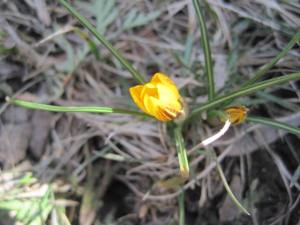It is winter in Canada. This year seems to be a particularly cold one too, if you are to believe the newspaper’s reports. Sure, there might be a few new record lows getting noted, but need I remind you that it’s WINTER. It gets cold in these parts! Put on a few layers and keep going my friends. That is what the trees do.
“Now hold on!” I hear you saying. “Aren’t trees like bears that more or less hibernate for the winter?”
Not exactly.
Lying Dormant – Trees in Winter
When leaves are shed and the flow of sap in trees slows down in winter, trees enter a dormant phase. That doesn’t mean that they are completely stagnant though. In fact, trees grow all year long, even in the dead of winter. Of course their growth rate is reduced and, try as you might, you cannot readily see it with the naked eye. Most of a tree’s growth in winter goes on under the soil in its root system. As the soil temperature is often warmer than the surrounding air, tree roots are still able to absorb water and nutrients at a minimal rate. It is a far slower growth than during any other time of year, but there is still some growth none the less.
For those who wonder how a tree could possibly survive our frigid winters, when we ourselves bitterly complain of the biting cold, let me put your mind at rest. Mother Nature helps trees out when she dumps a load of snow on the ground. That snow acts as an insulator, keeping warmth in the ground underneath the tree. Without that blanket of snow though, wind and cold temperatures rob the soil of its moisture, putting delicate tree roots at risk. A thick pile of snow is therefore a good thing which in turn protects the health of the dormant tree.
Snow cover from one winter to the next cannot be accurately predicted though. Some winters are cold and snowy, while others are mild and see little precipitation. Since the Farmer’s Almanac isn’t always correct, we never really know how much snow we will get over the course of a winter. What can we do for winter trees then?
Tree Protection
For folks who wish to give a little more protection for their urban trees, there is a solution. A good way to tuck your trees in for winter, and prevent heat loss, is with a layer of mulch around the base of a tree. Mulch helps the soil retain some of the its warmth and moisture, which in turn provides a better environment for a tree’s root system. That means that protection is there, snow cover or not. It also ensures continued growth over the course of the winter, regardless of what the wind chill in the surrounding air is.
So while hardy Canadians can’t exactly hibernate like the bears, know that our trees are struggling through the harsh winter too. Like our sluggish ways, they are also doing their minimum to survive. So the next time you reach for that extra layer to put on to protect you from the nasty cold, give yourself a pat on the back for adding that extra layer of mulch for your trees as well. The rewards will be here soon enough, as the sun will return, sap will flow once more (think maple syrup!), and with a spring in our step, renewal will burst from tree branches in the form of fresh new leaves, and hopefully a smile or two for you.





What a great post, thanks for sharing.
I appreciate you saying as much Emma. Come back and see what else is posted any time 🙂